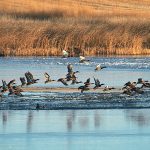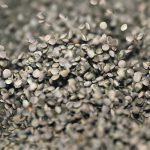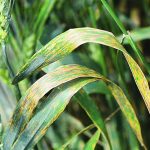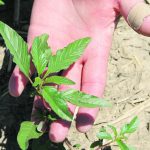WINNIPEG — About eight years ago, Aaron Hager warned farmers in Alberta about palmer amaranth. Hager, a University of Illinois weed scientist, spoke to growers at a conference in the Peace River region. He explained that palmer, a pigweed that grows to two metres or higher, could be viable in Alberta and other parts of […] Read more
Tag Archives North Dakota State University

Hunters urged to take biosecurity measures against bird flu
Farmers with plans to hunt ducks and geese should reduce risk of bringing bird flu home
UPDATED: September 19, 2024 – 0830 CST – To correct information provided by NDSU regarding documented cases of dogs transmitting bird flu. Glacier FarmMedia – Farmers planning to hunt geese and ducks this fall should take measures to reduce the risk of transmitting bird flu to flocks and herds say experts from North Dakota State […] Read more
Speed vs. quality at harvest time
Harvest time always brings the urgency of getting the crop off the fields as fast as possible, but that need for speed must be balanced with the need to avoid damage. Research at North Dakota State University looked at the issue, beginning with dry beans because their value is particularly vulnerable to issues such as […] Read more

Rent-own picture changes
In 2021, buying farmland on the Prairies probably made more sense than renting. Interest rates were still low and the cost of financing a land purchase was manageable. Two years later, an argument could be made that renting now makes more sense in many parts of Canada. Data from Farm Credit Canada suggests that on […] Read more

Farmland prices diverge at the border
WINNIPEG — For certain things in agriculture, such as laws, regulations and income support for farmers, the border between Canada and the United States does matter. But for other things, it doesn’t. Related stories: The type of soil and growing conditions on grain farms in southeastern Saskatchewan should be comparable to farms in northwestern North […] Read more

Bacterial Leaf Streak uncommon in Sask.
Contaminated seed is a major factor in the disease’s spread, which can also move plant to plant with the wind
In the last few years, Andrew Friskop has tested many, many products on bacterial leaf streak — a disease of wheat, barley and cereal crops. The results were easy to analyze. “Long story short, nothing,” said Friskop, a plant pathologist with North Dakota State University. “There’s nothing out there…. There’s nothing we can spray on […] Read more
Herbicide tolerant weeds spread up the Red River Valley
North Dakota farmers struggle to manage invasive weeds, and Man. producers have much to learn from their experiences
FARGO, North Dakota — You don’t have to take the dangers of herbicide resistant weeds seriously. Some farmers in North Dakota didn’t, daring to grow soybeans on soybeans three years in a row after resistant waterhemp showed up in their fields. “You can go from a few plants to (having waterhemp) across the field in […] Read more





